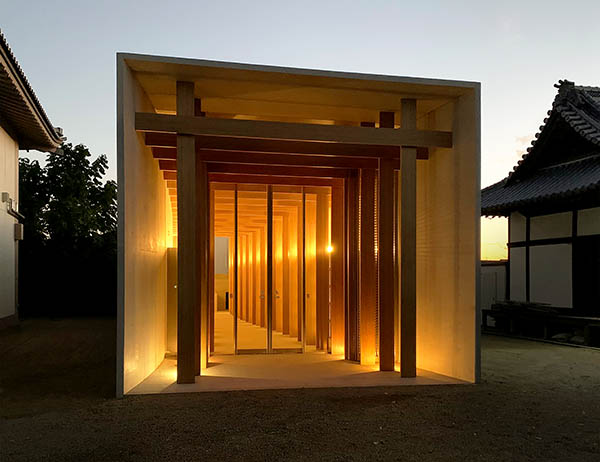RELIGIOUS ARCHITECTURE/NEW FACILITIES
Award
Shari-la
Takamatsu, Japan
Architect
UA architects
Kanagawa, Japan
Shari-la is a new, modern concrete ossuary in a precinct that is more than 1,300 years old, one of 88 sacred sites in Shikoku. The ossuary name, “Shari-la,” means “bone” in Sanskrit. The design takes the form of a single “bone,” with an interior space of an elongated cave with a slight taper. The Buddha with its altar is placed at the far end of the room. Repeated cedar frames as “gates” and “worm lights” like candles distinguish the interior. Cinerary altars are placed between each of the frames. Along the way to worship, the caved space narrows then expands gradually to the Buddha statue. The proportions of the gate frames also change along with the gradation. Each visitor’s experience of passing through space is the main focal point during worship.
Jury Comments
Shari-la ossuary stores the bones of deceased ancestors for visitations and venerations and is sensitive to the surrounding traditional architecture yet abstract at the same time. The building’s craftsmanship is stunning, and it creates a “journey” through time and space as part of the pilgrimage process.

